Thomas S. Kuhn (192296) was the Laurence Rockefeller Professor Emeritus of linguistics and philosophy at the Massachusetts Institute of Technology. His books include The Essential Tension; Black-Body Theory and the Quantum Discontinuity, 18941912; and The Copernican Revolution.
The University of Chicago Press, Chicago 60637
The University of Chicago Press, Ltd., London
1962, 1970, 1996, 2012 by The University of Chicago
All rights reserved. Published 2012.
Printed in the United States of America
21 20 19 18 17 16 15 14 13 12 1 2 3 4 5
ISBN-13: 978-0-226-45811-3 (cloth)
ISBN-13: 978-0-226-45812-0 (paper)
ISBN-13: 978-0-226-45814-4 (e-book)
ISBN-10: 0-226-45811-3 (cloth)
ISBN-10: 0-226-45812-1 (paper)
ISBN-10: 0-226-45814-8 (e-book)
Library of Congress Cataloging-in-Publication Data
Kuhn, Thomas S.
The structure of scientific revolutions / Thomas S. Kuhn ; with an introductory essay by Ian Hacking.Fourth edition.
p. cm.
Includes bibliographical references and index.
ISBN-13: 978-0-226-45811-3 (cloth : alkaline paper)
ISBN-10: 0-226-45811-3 (cloth : alkaline paper)
ISBN-13: 978-0-226-45812-0 (paperback : alkaline paper)
ISBN-10: 0-226-45812-1 (paperback : alkaline paper)
[etc.]
1. SciencePhilosophy. 2. ScienceHistory. I. Hacking, Ian. II. Title.
Q175.K95 2012
501dc23
2011042476
 This paper meets the requirements of ANSI/NISO Z39.48-1992 (Permanence of Paper).
This paper meets the requirements of ANSI/NISO Z39.48-1992 (Permanence of Paper).
The Structure of Scientific
REVOLUTIONS
FOURTH EDITION
THOMAS S. KUHN
With an Introductory Essay by Ian Hacking
The University of Chicago Press
Chicago and London
Introductory Essay
IAN HACKING
Great books are rare. This is one. Read it and you will see.
Skip this introduction. Come back to it if you want to know how the book came into being half a century ago, what its impact was, and the disputes that raged around its theses. Come back if you want one experienced opinion of the status of the book today.
These remarks introduce the book, not Kuhn and It can be thought of as a series of commentaries and expansions, so it is excellent companion reading.
Since this
Just because Structure is a great book, it can be
One thing is not said often enough: like all great books, this is a work our species, for better or worse, to dominate the planet. He succeeded.
1962
The present edition commemorates the fiftieth anniversary of Structure. Nineteen sixty-two was a long time ago. The sciences themselves have radically changed. The queen of the sciences, then, was physics. Kuhn had been trained as a physicist. Few people knew much physics, but everybody knew that physics was where the action was. A cold war was in progress, so everyone knew about the Bomb. American schoolchildren had to practice cowering under their desks. At least once a year towns sounded an air raid siren, at which everyone had to take shelter. Those who protested against a nuclear weapon, by ostentatiously not taking shelter, could be arrested, and some were. Bob Dylan first performed A Hard Rains A-Gonna Fall in September 1962; everyone assumed it was about nuclear fallout. In October 1962 there was the Cuban Missile Crisis, the closest the world has come, after 1945, to nuclear war. Physics and its threat were on everyones mind.
The Cold War is long over, and physics is no longer where the action is. Another event of 1962 was the awarding of Nobel prizes to Francis Crick and James Watson for the molecular biology of DNA and to Max Perutz and John Kendrew for the molecular biology of hemoglobin. That was the harbinger of change. Today, biotechnology rules. Kuhn took physical science and its history as his model. You will have to decide, after reading his book, about the extent to which what he said about the physical sciences holds true in the teeming, present world of biotechnology. Add in information science. Add in what the computer has done to the practice of science. Even experiment is not what it was, for it has been modified and to a certain extent replaced by computer simulation. And everyone knows that the computer has changed communication. In 1962 scientific results were announced at meetings, in special seminars, in preprints, and then in articles published in specialist journals. Today the primary mode of publication is in an electronic archive.
There is yet another fundamental difference between 2012 and 1962. It affects the heart of the book, fundamental physics. In 1962 there were competing cosmologies: steady state and big bang, two completely different pictures of the universe and its origin. After 1965 and the almost fortuitous discovery of universal background radiation, there is only the big bang, full of outstanding problems pursued as normal science. In 1962 high-energy physics seemed to be an endless collection of more and more particles. What is called the standard model brought order out of chaos. It is unbelievably accurate in its predictions, even if we have no idea how to fit it together with gravity. Perhaps there will not be another revolution in fundamental physics, although for sure there will be surprises galore.
Thus The Structure of Scientific Revolutions may beI do not say ismore relevant to a past epoch in the history of science than it is to the sciences as they are practiced today.
But is the book history or philosophy? In 1968 Kuhn began a lecture insisting, I stand before you as a practicing historian of science. on public culture. That is the perspective from which this introduction is written.
Structure
Structure and revolution are rightly put up front in the books title. Kuhn thought not only that there are scientific revolutions but also that they have a structure. He laid out this structure with great care, attaching a useful name to each node in the structure. He had a gift for aphorism; and his names have acquired an unusual status, for although they were once arcane, some of them are now part of colloquial English. Here is the sequence: (1) normal science (IIIVhe called these sections, not chapters, for he thought of Structure as more of a book outline than a book); (2) puzzle-solving (IV); (3) paradigm (V), a word which, when he used it, was rather uncommon, but which after Kuhn has become banal (not to mention paradigm shift!); (4) anomaly (VI); (5) crisis (VIIVIII); and (6) revolution (IX), establishing a new paradigm.
That is the structure of scientific revolutions: normal science with a paradigm and a dedication to solving puzzles; followed by serious anomalies, which lead to a crisis; and finally resolution of the crisis by a new paradigm. Another famous word does not occur in the section titles: incommensurability. This is the idea that, in the course of a revolution and paradigm shift, the new ideas and assertions cannot be strictly compared to the old ones. Even if the same words are in use, their very meaning has changed. That in turn led to the idea that a new theory was not chosen to replace an old one, because it was true but more because of a change in world view (X). The book ends with the disconcerting thought that progress in science is not a simple line leading to the truth. It is more progress away from less adequate conceptions of, and interactions with, the world (XIII).
Let us look at each idea in turn. Obviously the structure is all too neat. History, the historian protests, just is not like that. But it was precisely Kuhns instinct as a physicist that led him to find a simple and insightful all-purpose structure. It was a picture of science that the general reader could pick up. It had the merit of being to some extent testable. Historians of the sciences could look and see the extent to which momentous changes in their fields of expertise did in fact conform to Kuhns structure. Unfortunately it was also abused by the wave of skeptical intellectuals who called the very idea of truth in question. Kuhn had no such intention. He was a fact lover and a truth seeker.

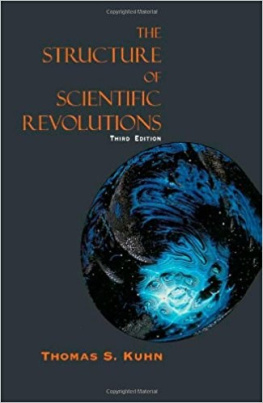




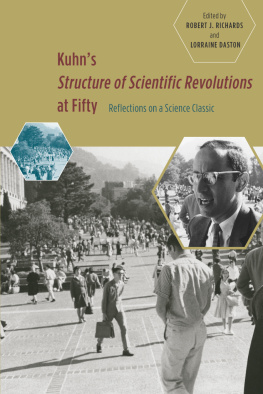
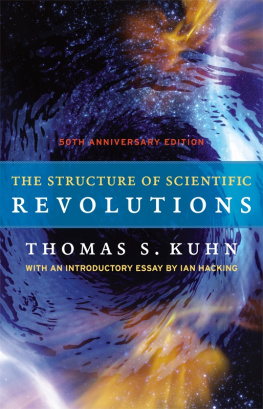
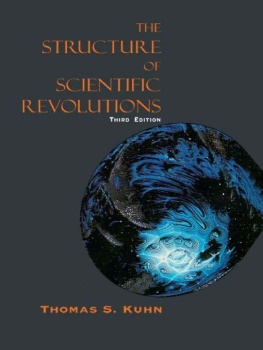
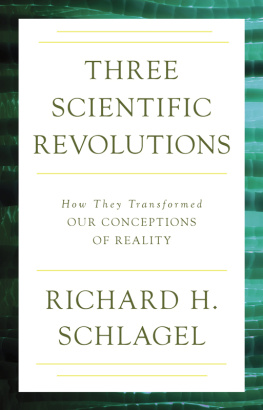
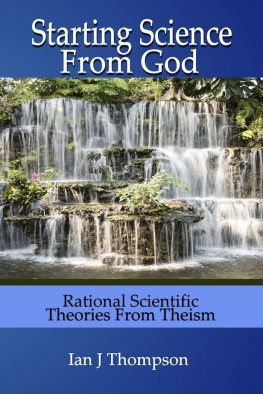
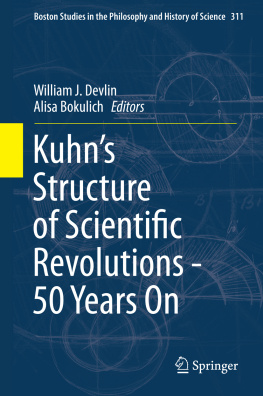
 This paper meets the requirements of ANSI/NISO Z39.48-1992 (Permanence of Paper).
This paper meets the requirements of ANSI/NISO Z39.48-1992 (Permanence of Paper).